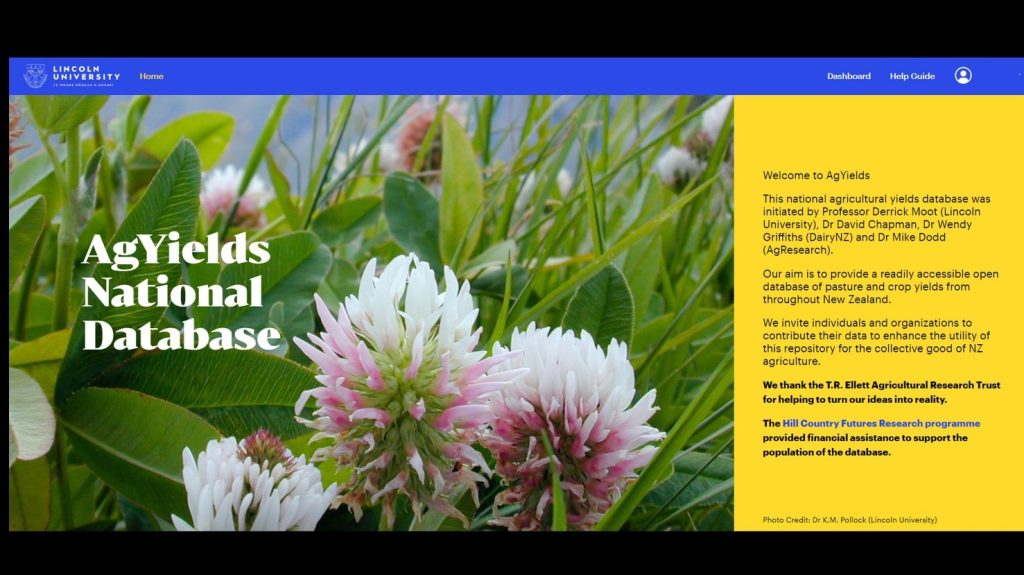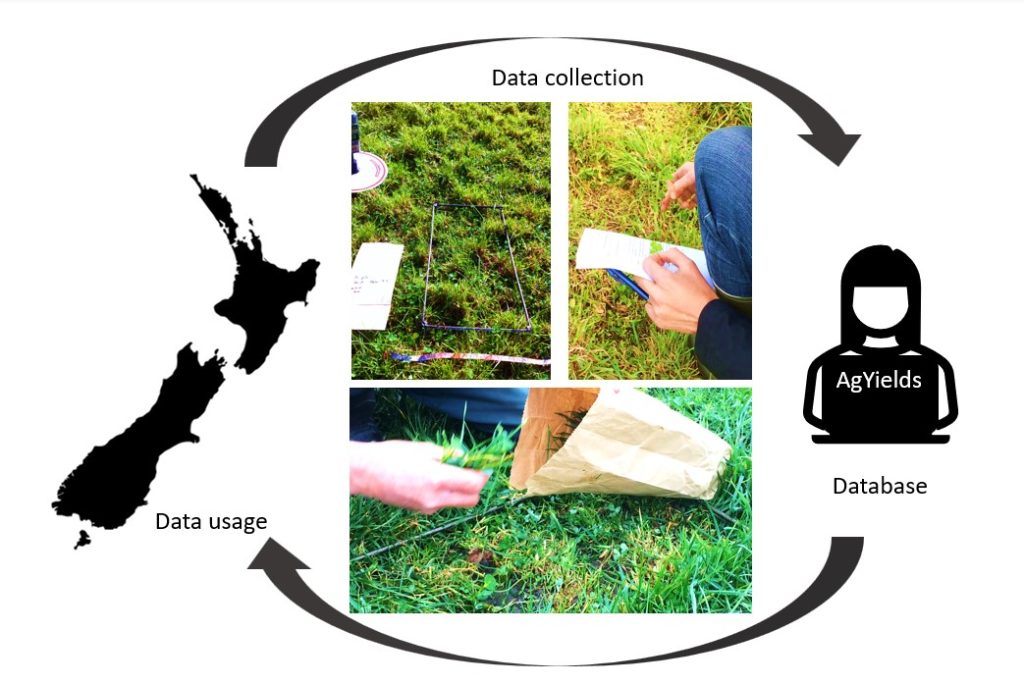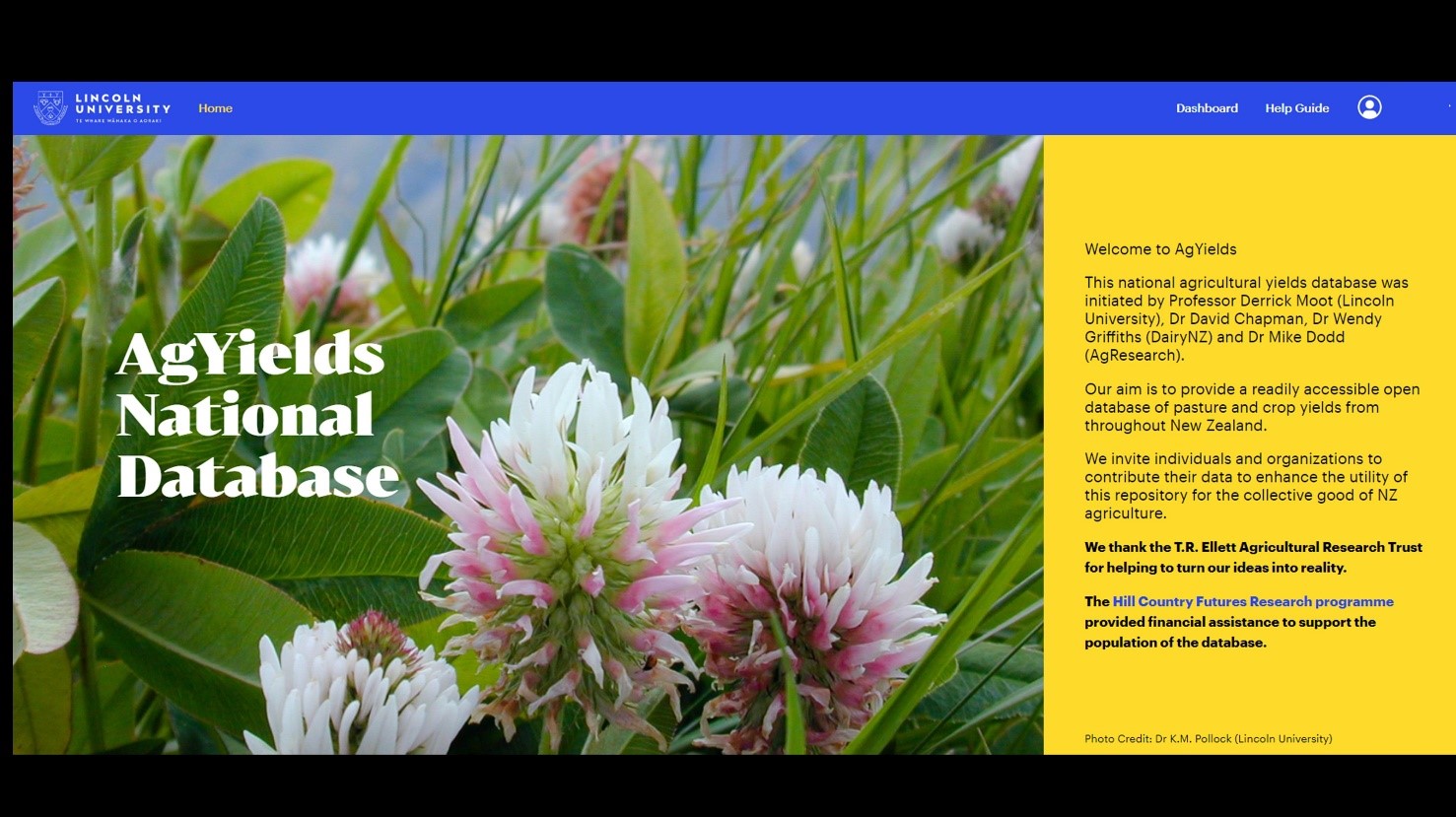Posted on behalf of the DPR Group.
The AgYields National database has been created as an open access repository for pasture and crop data including flowering dates, grain and pasture yields and mean daily growth rates in different New Zealand locations. The data can be used by farmers, consultants, students and researchers.

There were several reason for creating this open access database:
- To provide data to meet a need for local data for different species to inform feed budgeting programmes for individual farms within social and environmental boundaries.
- To address emerging challenges to crop and pasture productivity and persistence (e.g. climate change; environmental regulations) that require data on a range of species to allow informed decision making.
- To inform models that require this fundamental data, for land use evaluation and planning.
- To prevent the loss of legacy knowledge of where and when field data have been collected.
- To reduce the cost and risks associated with archiving paper-based old reports and associated data.
- To make publicly funded research data readily available in an open access form.

Database development was funded by T.R. Ellett Agricultural Research Trust who realised the importance of such an asset. Lincoln University is hosting the database as part of its service to, and engagement with, the rural sector. The Hill Country Futures Research programme supported the population of the database, particularly the input of datasets from Northland and nationwide datasets with sub clover, red clover and plantain.
For anyone wanting to know the yield of a pasture or crop grown in specific local district the database can be your primary source. A feature of the database is that it allows published (peer reviewed) and unpublished datasets to be entered so on-farm crop data collection by farmers and rural professionals can be entered which allows users to determine its relevance.
The ability to enter the data in one repository means future researchers can be spared the time spent searching journals and reports to gather the scattered data.
Below is an introductory video about the AgYields National Database:
If you, or your organisation, wish to add/archive research data to the database we have created a playlist of “How to…” videos. This is available on the Dryland Pastures Youtube channel. You can watch the tutorials below or can navigate directly to the Youtube playlist using this link: https://www.youtube.com/watch?v=yz2nfT85UV4&list=PLr5_Hclr3uZVpxyfK9mIFZyXLty4Ml1fO.
